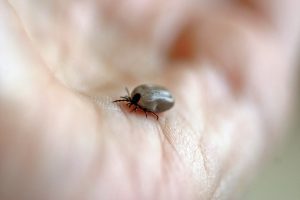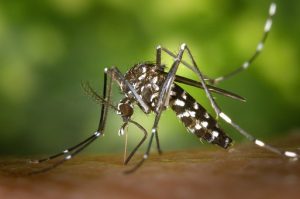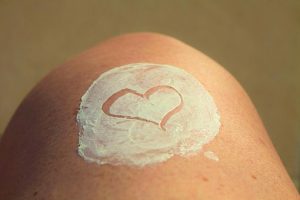 Ticks
Ticks
Tick-borne disease is on the rise in the US, with 7 new tick diseases identified in the last 15 years. This spike in disease is due to a greater number of ticks invading larger areas of the US, including the entire East Coast and rapidly extending to northern and western states. Tick bites can cause serious illness in humans by introducing infections which can affect your nervous system, heart, liver and joints.
What can be done? Prevention is the best strategy!
Use tick repellants that contain at least 20% DEET or picaridin on exposed skin, and 0.5% permethrin on clothes and hiking gear.
Wear light-colored clothing that covers arms and legs to make ticks easier to see, some ticks are as tiny as poppy seeds. Tuck your pants into socks to limit their access and consider the use of permethrin-treated clothing.
Hike in the center of a trail and avoid walking through long grasses. Ticks do not jump, fly or drop from trees, they climb tall plants or bushes and attach as animals and humans brush past.
Check carefully for ticks, including your scalp and in the folds of your skin as soon as you return home. Shower and wash your clothes with hot water to kill any remaining ticks.
Check pets daily for ticks. While deer ticks are more prominent in grassy and wooded areas, the tick zone also extends to coastal regions. Some ticks, like dog ticks, are even prevalent on lawns kept regularly mowed.
Remain vigilant in the summer and year-round, some ticks remain active, even in winter months.
How best to remove a tick?
The sooner the better. Most disease from ticks can be prevented by removing the tick within 24 hours.
Use fine-tipped tweezers to grab the tick close to the skin and gently pull upward with steady, even pressure.
After the tick is removed, wash the area with soap and water and use a triple antibiotic ointment at the site, like Neosporin™.
Do not try to burn the tick, or use products like Vaseline, gasoline, nail polish or rubbing alcohol. The most important thing is to promptly remove the tick, not wait for it to fall off.
When to see your doctor?
If you develop flu-like symptoms, headache, fever, joint pain or rash after a tick bite. Also, seek medical care if you cannot remove all of the tick.
 Mosquitoes
Mosquitoes
Beyond the annoying itch, mosquitoes are a major cause of serious disease, including Dengue Fever, several types of encephalitis, Zika and West Nile Virus. Use of an EPA approved repellant is a proven effective and safe way to prevent bites, even in pregnant and breastfeeding women. DEET, picaridin, oil of lemon eucalyptus, IR3535, 2-undecanone, and para-menthane-diol make the EPA approved list.
Protecting kids and babies are different: para-menthane-diol and oil of eucalyptus are not recommended for children under 3, and no repellant is recommended for infants younger than 2 months. Instead use long clothing to cover skin, and netting over baby strollers to limit exposure.
Since it’s summer, if you are also using sunscreen, apply the sunscreen first and the insect repellant second.
Limit mosquito populations
Remove standing water where mosquitoes breed. Regularly empty gutters, plastic covers, birdbaths, or other containers that hold water around your home, especially during the summer months.
Keep pool water circulating and treated.
Wear long sleeves and pants to cover skin, especially at dawn and dusk when mosquitoes are more active.
 Poison Ivy
Poison Ivy
The rash from poison ivy is an allergic reaction to the oil on the plant’s roots, stems, and leaves. Exposure occurs by directly touching the plant, or indirectly, by touching objects contaminated with the oil, like pet fur or gardening tools. Exposure can also occur by breathing the smoke of burning poison ivy plants. While the rash is not contagious, it can spread to other parts of the body through residual oil left on your fingertips and clothing. Itching and rash start within 12-72 hours after exposure. The severity of the rash depends on the amount of oil that contacts your skin and your sensitivity to the oil. Blistering and itching can last for weeks!
What to do? Prevention is best!
Learn to identify poison ivy and remove any plants from your yard with herbicide or by pulling the plants up by the roots. Wear protective clothing and gloves while gardening.
Wash your skin within 30 minutes of exposure, making sure to scrub under your fingernails. Tecnu ™ is an over the counter soap specifically made to wash away the oil from your skin after contact with poison ivy.
Wash objects that may have been contaminated by poison ivy with a detergent, including clothes, shoes, shoelaces, gardening equipment and even pet fur. The oil of poison ivy can remain potent for years.
Treat poison ivy with a daily oral antihistamine and 1% hydrocortisone cream 2 times a day.
When to see your doctor?
If you have a widespread or severe rash or rash on the face or in the genital region. Seek care immediately if you develop fever, pus from the rash, pain or swelling, or if you have inhaled the smoke from burning plants.
Sunscreen Safety
 Sunscreen has made the news lately, as the FDA weighs the safety of several common sunscreen ingredients. Titanium oxide and zinc oxide have been deemed safe and effective to use by the FDA. Two components have been deemed unsafe by the FDA: PABA and Trolamine, but these are fortunately are not found in sunscreens used today. Even while the FDA seeks more information on the safety and efficacy of 12 additional sunscreen chemicals, both the FDA and dermatologists recommend the use of sunscreen in the interim. “Given the recognized public health benefit of sunscreen use, Americans should continue to use sunscreen and other protective sun measures as this important rulemaking effort moves forward.” The FDA plans to make a final ruling on this issue by November 2019, which will also establish a cap on the greatest SPF protection that sunscreens can claim.
Sunscreen has made the news lately, as the FDA weighs the safety of several common sunscreen ingredients. Titanium oxide and zinc oxide have been deemed safe and effective to use by the FDA. Two components have been deemed unsafe by the FDA: PABA and Trolamine, but these are fortunately are not found in sunscreens used today. Even while the FDA seeks more information on the safety and efficacy of 12 additional sunscreen chemicals, both the FDA and dermatologists recommend the use of sunscreen in the interim. “Given the recognized public health benefit of sunscreen use, Americans should continue to use sunscreen and other protective sun measures as this important rulemaking effort moves forward.” The FDA plans to make a final ruling on this issue by November 2019, which will also establish a cap on the greatest SPF protection that sunscreens can claim.
What to do?
Choose sunscreens that contain zinc oxide or titanium oxide, which have been deemed safe and effective by the FDA.
Apply a broad-spectrum sunscreen with an SPF of 30 or higher regularly, preferably every two hours while in the sun. Remember to reapply after swimming or sweating. Sunscreen reduces your risk of skin cancer and prevents sunburn and signs of aging.
Seek shade and wear protective clothing to protect yourself from the sun. Avoid peak summer sun exposure hours between 10 am and 2 pm.
Sunscreen is not recommended for infants < 6 months. Young infants should be kept out of the sun and wear protective clothing and hats.
After 6 months of age, babies can begin safely using baby specific sunscreen, which is fragrance-free and composed of zinc oxide or titanium oxide, both deemed safe and effective by the FDA.
Contact Family Healthcare of Fairfax for All Your Health Prevention Needs This Summer
If you’re concerned about any of the issues described above, then give us a call. Summer is great, but you have to be careful! Give us a call or email us to join Family Healthcare of Fairfax today.

